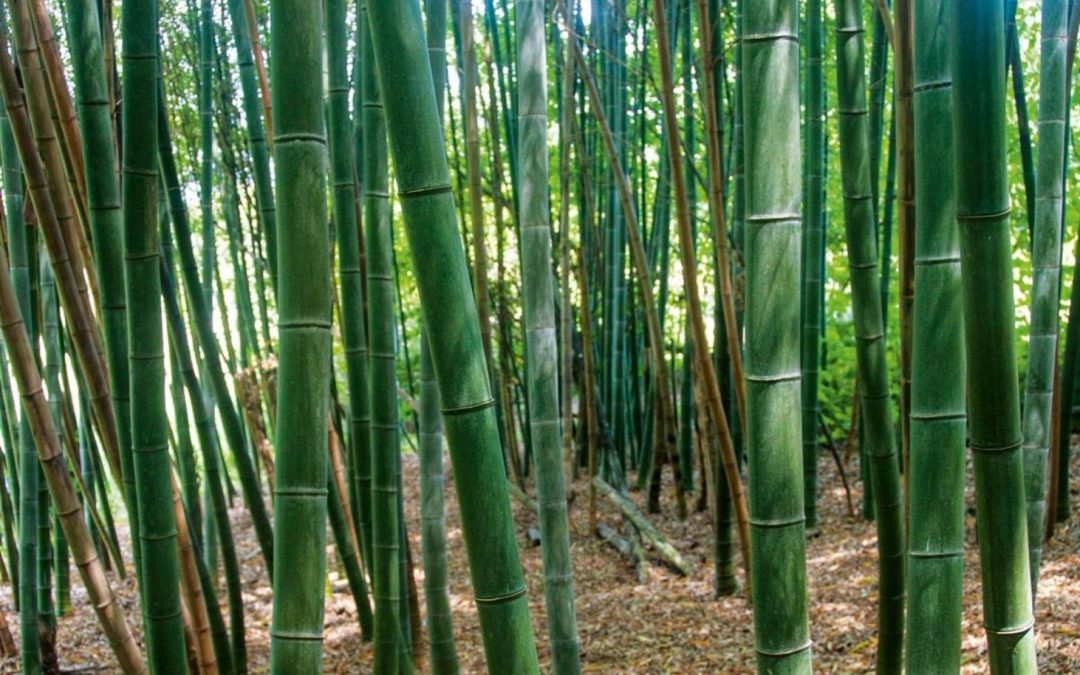The Philippine Bamboo Plant
Bamboos are typically fast-growing perennials, with some bamboo species growing as much as 30 cm (1 foot) per day. The woody ringed stems, known as culms, are typically hollow between the rings (nodes) and grow in branching clusters from a thick rhizome (underground stem). Bamboo culms can attain heights ranging from 10 to 15 cm (about 4 to 6 inches) in the smallest species to more than 40 metres (about 130 feet) in the largest. While the narrow leaves on young culms usually arise directly from the stem rings, mature culms often sprout horizontal leaf-bearing branches. Most bamboos flower and produce seeds only after 12–120 years’ growth, and then only once in their lifetime; reproduction is largely vegetative. Some species spread aggressively and can form a dense undergrowth that excludes other plants.
Philippine Bamboos are used for a great variety of purposes, especially in East and Southeast Asia. The seeds of some bambooo species are eaten as grain, and the cooked young shoots of some bamboos are eaten as vegetables, especially in Chinese cuisines. The raw leaves are a useful fodder for livestock. The pulped fibres of several bamboo species, especially Dendrocalamus strictus and Bambusa bambos, are used to make fine-quality paper. The jointed stems of bamboo have perhaps the most numerous uses; the largest stems supply planks for houses and rafts, while both large and small stems are lashed together to form the scaffoldings used on building-construction sites. The stems are also split up to make buckets and pipes or are used to make furniture, flooring, walking sticks, fishing poles, garden stakes, and other utensils. Some species of bamboo are used as ornamentals in landscape gardens. The fine-grained silica produced in the joints of bamboo stems has been used as a medicine in the Orient for centuries under the name tabasheer. East Asian artists, poets, and epicures have long celebrated the beauty and utility of bamboo in paintings and verse.
OPPORTUNITIES IN PHILIPPINE BAMBOO
There are ver 60 Bamboo species that are endemic to the Philippines. No longer should it be seen as a “poor-man’s timber”. The sooner we realize the opportunities that lie in Philippine Bamboo, the better it will do to the economy to help provide a stable livelihood for the common filipino. There are a lot of Government programs now that support even the small time farmer to help and guide Filipinos to get started and venture into the Bamboo industry. Check out the DTI, DOST , DENR and National Greening Program websites to see what you can avail of.
ABOUT THE BAMBOO BOOTCAMP
** The Bamboo Bootcamp is a Bamboo workshop for anybody with the LOVE and Interest in Bamboo and on a mission for a sustainable ecosystem. Farmers that want to propagate, professionals who want to see its properties as a strong building material, Craftsmen who want to learn how to work with it, Enthusiasts who want to learn of its many uses, Arts & Crafts Lovers who want to learn how to use Bamboo as a medium and Entrepreneurs, LGUs and Business People who can see the opportunity for livelihood. The Bamboo Industry fulfils the 17 Sustainable Goals set forth by the UN, thus allowing participants to indulge in building a better world through Bamboo.


Recent Comments